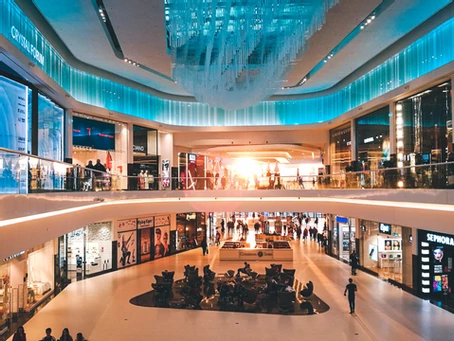E-commerce and the high cost of real estate are hitting the brick and mortar retail industry hard this year with several retail chains like Sport Chalet and Sports Authority closing its doors. In addition, Macy’s announced it is closing 100 stores out of 728 Full-line stores.
The high value of commercial real estate is increasing the cost to lease retail space in California. In addition, the online stores like Amazon have been detrimental to brick and mortar retail. During the Great Recession there were many retail vacancies and rents were low; however, those spaces have been leased and new construction began.
Land is more expensive in Los Angeles due to the lack of available open space to build, and construction prices are higher. As a result, rental and sales prices for commercial real estate are much higher than before. This compounded with online retail competition in California makes it more difficult for the consumers to go into the department stores.
As a result, many chain stores are closing locations and selling off their properties; such as, Sears and Macy’s. It is more lucrative to sell property than sell merchandise. In a press release dated August 11, 2016, Macy’s said, “In a number of cases, stores will be closed as the value of the real estate exceeds their value to Macy’s as a retail store.”
When a 3,000-square-foot retail store at the Santa Monica Third Street Promenade sells for $15.6 million, it’s time to start thinking about selling. The retail buildings in the upscale or gentrified areas are selling for $5,000 per square foot or more. Last month the parent company of Louis Vuitton recently paid a record $122 million, or $19,405 a square foot, for the yellow House of Bijan building located at 420 N. Rodeo Drive in Beverly Hills.
Commercial retailers are finding it hard to keep up with the high rents in Los Angeles. The rents at the Third Street Promenade are averaging up to $8 per square-foot triple Net lease per month. For example a 2,000 square-foot store could cost $16,000 per month in rent. I have been in the commercial real estate business for over 40 years, and I have never seen such increases occur in a relative short period of time.
Sears announced that it would close 10 stores and 68 Kmart stores leaving them with 1,500 operating Sears and Kmart stores. Last year, to raise cash, Sears sold off many of its best store locations to a real estate investment trust for $2.7 billion and is leasing back some of the properties. Many stores are following suit. Macy’s is in negotiations to sell its Macy’s Men’s Store located on Union Square in San Francisco for redevelopment. In addition, they are in early-stage joint venture discussions with development partners on some of the 100 closing stores.
Macy’s and other stores realize with their online services they don’t need as much retail space as they did in the past; as a result, they are downsizing their commercial real estate and improving their online presence. However, brick and mortar stores are not dead for retail. It needs to co-exist with online retail.
Shoppers go into retail shops to find the item and size they want, and they go home and purchase it online for less. Some stores like Staples will match a price that a customer finds online for less to keep the business in their stores.
Amazon started opening retail stores last year and plans to open more pop-up (short-term) stores in shopping centers around the United States. These 300-500-square-foot shops located mostly in malls will sell technology devices such as; Fire TV, Fire Tablets and Kindle. These items will help customers buy from Amazon online. There are seven Amazon pop-up stores in California. Three are located in Los Angeles County, according to the Amazon website.



